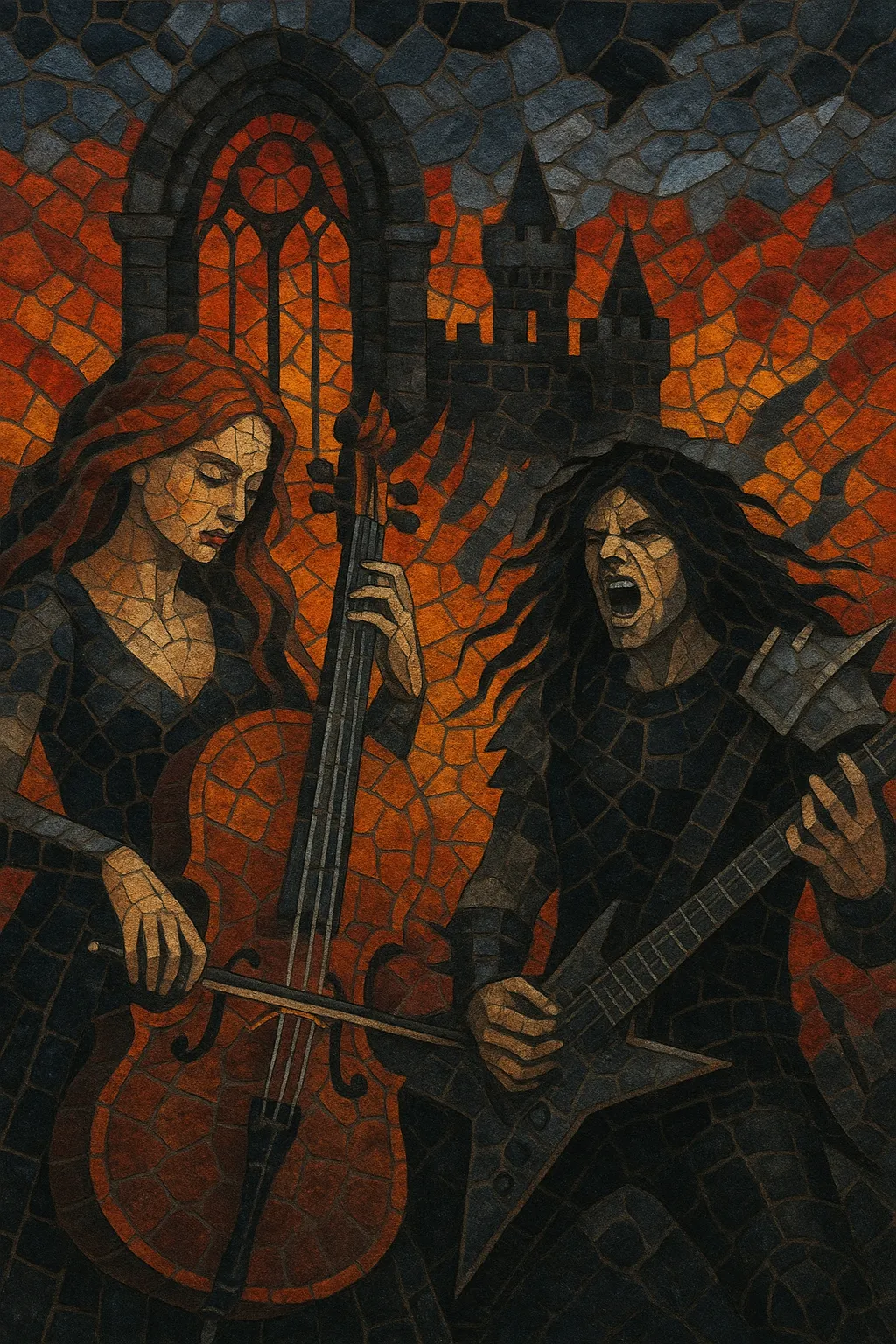Symphonic metal fuses the power and riff-driven weight of heavy metal with the grandeur of orchestral music, choral writing, and operatic vocals. It often features full-scale symphonic arrangements—either via live orchestras and choirs or through sophisticated sampling—alongside distorted guitars, bass, and double-kick drumming.
Hallmarks include cinematic songwriting, classical harmony (minor keys, modal colors, counterpoint), sweeping string ostinati, brass fanfares, and layered choirs. Vocal approaches range from operatic soprano leads to melodic rock vocals and occasional harsh growls. Lyrically, the genre leans toward myth, fantasy, history, philosophy, and romantic or existential themes, delivering an epic, theatrical atmosphere.
Symphonic metal’s roots lie in the intersection of classic heavy metal with the orchestral ambitions of symphonic rock and progressive rock. Throughout the 1980s and early 1990s, bands in power metal and gothic metal increasingly adopted keyboards, choirs, and classical references. In parallel, symphonic black metal pioneered large-scale choral and string textures in extreme contexts, demonstrating that orchestral colors could sit convincingly atop intense metal frameworks.
By the mid-1990s, Northern and Western Europe incubated the fully fledged style. Sweden’s Therion (e.g., Theli, 1996) integrated full choirs and orchestration into metal song structures. Soon after, Finland’s Nightwish (from 1997) and the Netherlands’ Within Temptation (from 1997) and After Forever began combining operatic or classically trained vocals with symphonic arrangements and metal riffing. Italy’s Rhapsody (of Fire) brought a film-score flair and fantasy storytelling, helping cement the genre’s cinematic identity.
The 2000s saw a wave of prominent releases and international touring. Epica (NL), Delain (NL), Xandria (DE), Kamelot (US, with European collaborators), Haggard (DE), and Leaves’ Eyes (DE/NO) broadened the sound’s reach. Production standards rose: orchestral libraries, professional orchestrators, and live recordings with ensembles (e.g., London or Prague orchestras) became common. Festivals across Europe showcased the style, and symphonic metal gained a strong fanbase in Latin America and Asia.
In the streaming era, the genre continued to evolve with ever more intricate arrangements, concept albums, and multimedia shows. Bands increasingly collaborated with film composers and classical musicians, while sub-scenes (symphonic power, gothic-symphonic, folk-symphonic blends) solidified. Today, symphonic metal remains a globally recognized metal pillar, known for its theatrical presentation and enduring crossover appeal to both metal and classical-leaning listeners.


